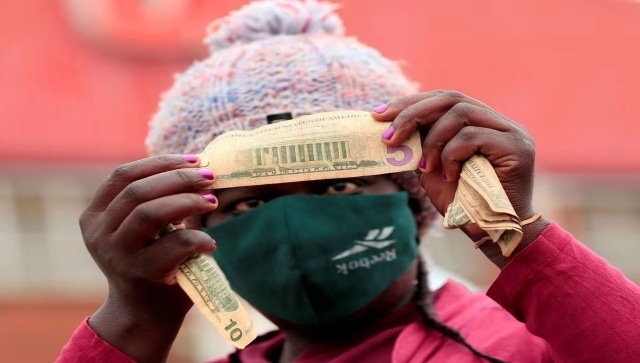Representational image. Reuters
A week filled with geopolitical danger, Chinese economic data, and earnings reports from big US banks saw Asian equities get off to a slow start on Monday.
As congressional leaders reached an agreement on another interim spending plan, there was at least some movement towards preventing an impending government shutdown despite light trade due to the US holiday.
The broadest MSCI index of Asia-Pacific stocks outside of Japan fell 0.1 per cent following a 0.8 per cent loss the previous week. Japan’s Nikkei continued to rise steadily, closing in on 34-year highs after a spectacular 6.6 per cent gain previous week.
Both the Nasdaq and S&P 500 futures saw early trading losses of about 0.1 per cent.
Earnings season rolls on, with Goldman Sachs and Morgan Stanley among those reporting. Retail sales is the main US data of the week, while the Iowa caucus will be run in frigid weather later on Monday.
There was limited reaction to the victory of the ruling, pro-independence Democratic Progressive Party in Taiwan, which essentially left the status-quo intact.
The tensions with China were a reminder that geopolitics will loom over markets this year, with elections across the globe and the threat of a wider conflict in the Middle East.
“For now, we think China is still focused on engineering economic stability,” said Damien Boey, chief macro strategist at investment bank Barrenjoey in Sydney.
“The equity risk premium globally needs to rise, but it, and the risk free rate are being suppressed at the moment by central bank response functions to lower inflation.”
China report economic growth data for the fourth quarter and a slew of monthly figures on Wednesday, which are expected to show the recovery remains sluggish overall.
Highlighting the challenges ahead, China’s central bank is considered likely to cut its one-year medium-term lending facility rate on Monday and pump in extra liquidity.
It is hardly alone, as markets are wagering most of the world’s central banks will be easing policy this year.
Counting on rate cuts
Futures imply a 79 per cent probability the Federal Reserve will cut as soon as March, with soft producer price data offsetting a disappointing consumer price report.
Analysts at Barclays noted the Fed’s favoured core personal consumption price index looked set to undershoot the CPI.
“Core PCE continuing to run at or below 0.2 per cent m/m is softer than we had expected, with little indication of firming in the near term,” said Barclays economist Christian Keller.
“As a result, we bring forward our expectation for the first Fed cut from June to March.”
He also suspected Fed Governor Christopher Waller could open the door to an easing at a speech on Tuesday.
The Davos World Economic Forum runs to Friday and is notably packed with European Central Bank speakers, including President Christine Lagarde.
Over the weekend, ECB chief economist Philip Lane said there would have been enough data by June to decide on the first of a likely series of interest rate cuts.
Markets are fully priced for an easing in April and imply a whopping 154 basis points of cuts over 2024.
That dovish outlook has limited the euro’s gains on the dollar and it was idling at $1.0940 on Monday, having barely budged last week.
The dollar has fared somewhat better on the yen, as a run of subdued Japanese data gave the Bank of Japan reason to stick with its uber-easy policies. The dollar edged up further to 145.22 yen, and toward last week’s top of 146.41.
The prospect of lower rates globally was underpinning non-yielding gold at $2,047 an ounce, following a 1 per cent jump on Friday.
Oil prices have got some lift from disruptions to shipping in the Red Sea, though worries about demand this year have limited the rally.
Brent eased 13 cents to $78.16 a barrel, while US crude fell 11 cents to $72.57 per barrel.




